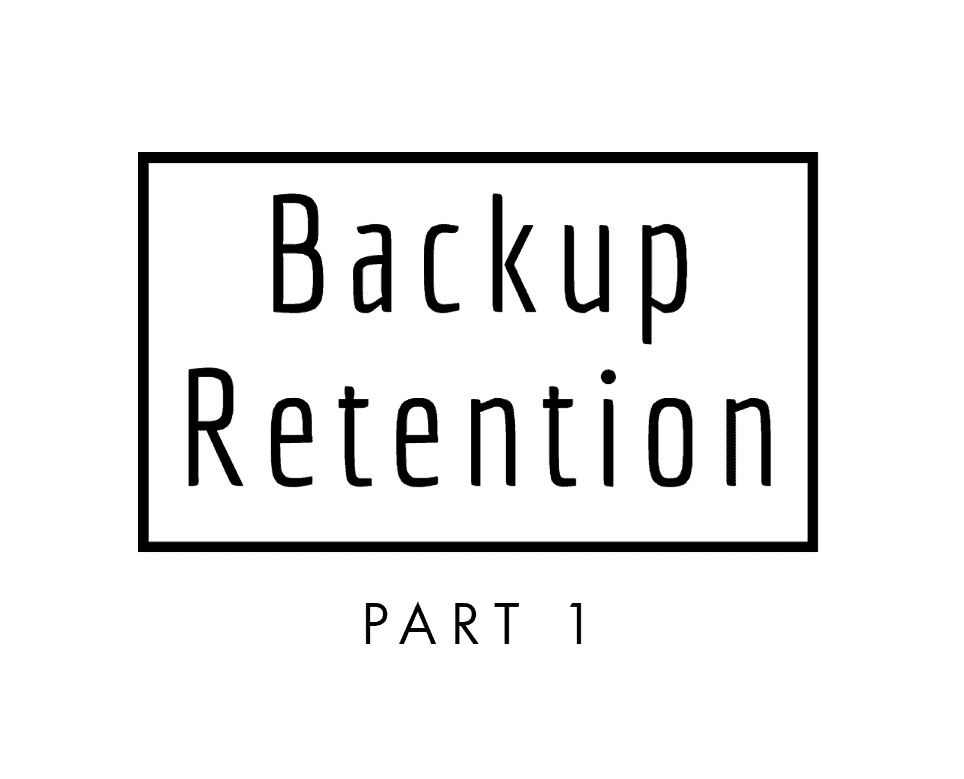With backup retention times there is always a balance between keeping enough backups and purging those backups quickly to free up space.
Some clients I have worked with only keep 2 to 3 days of backups, and others keep multiple years of backups. I generally like to push for something longer term than 2 or 3 days.
Some argued that they don’t need any backups for more than 2 weeks. The reason being is that in 2 weeks their data would have changed so much that they would never want to recover from backups.
That brings up the question,
Why you would want to restore from backups.
There are certainly the obvious reasons:
- System failure, needing to rebuild a server
- Disaster recovery
- Accident data destruction
There are some other reasons to have an older backup around:
- Corruption repair. Having an older backup available is handy especially if the recent backups contain the corruption. It doesn’t mean that we would go back the older backup, but that we might grab some table structures and older data from that backup.
- Accidental data deletion. An example here is when someone deletes something from the database that is needed only occasionally. This deletion probably wouldn’t be noticed quickly, possibly not for a week or two. We have done repairs where we had to pull in a table that was dropped 3 weeks prior and put it back into the system now. Not all data deletion is immediately noticed.
Here are some backup methods that can help with your longer-term strategy:
Backup Retention Methods
The following backup retention methods can be used to:
- Manage tapes in a tape rotation
- Manage USB / Firewire hard drive backups
- Manage the copies of data backed up onto a server.
To be continued………………………..
*** will cover 6 different backup retention methods and comparison chart in part 2.
More from Stedman Solutions:

Steve and the team at Stedman Solutions are here for all your SQL Server needs.
Contact us today for your free 30 minute consultation..
We are ready to help!
